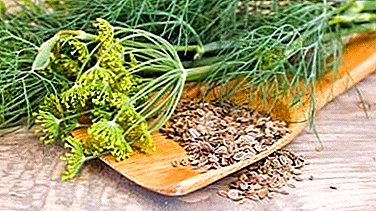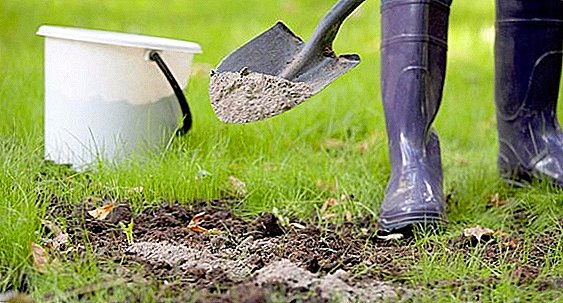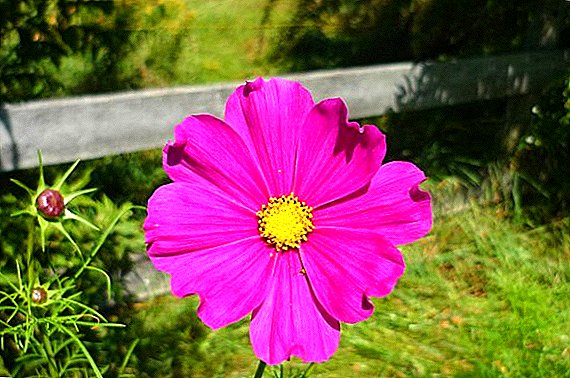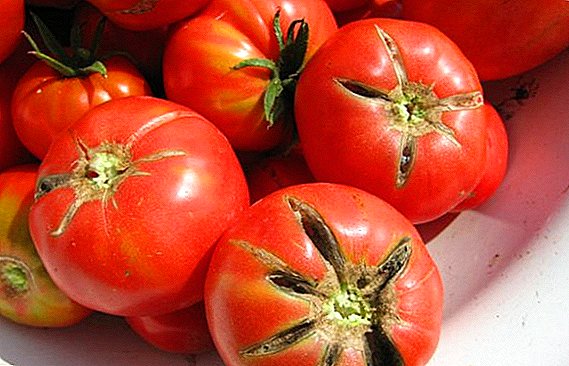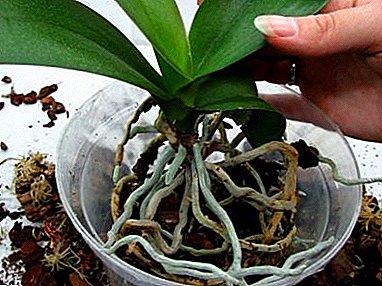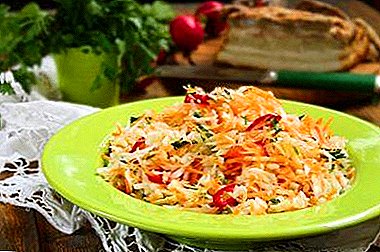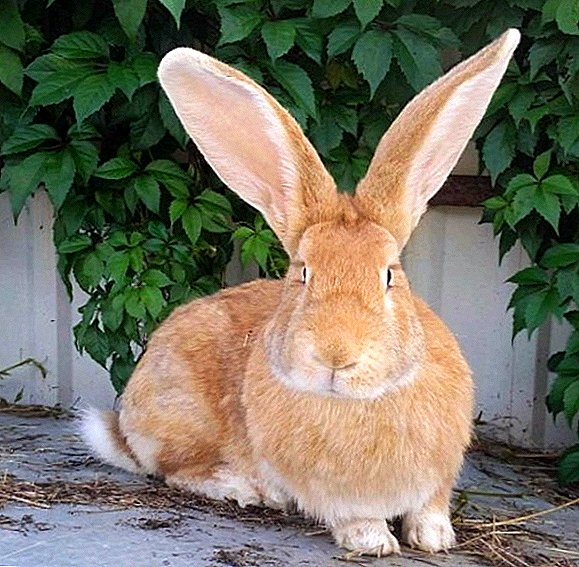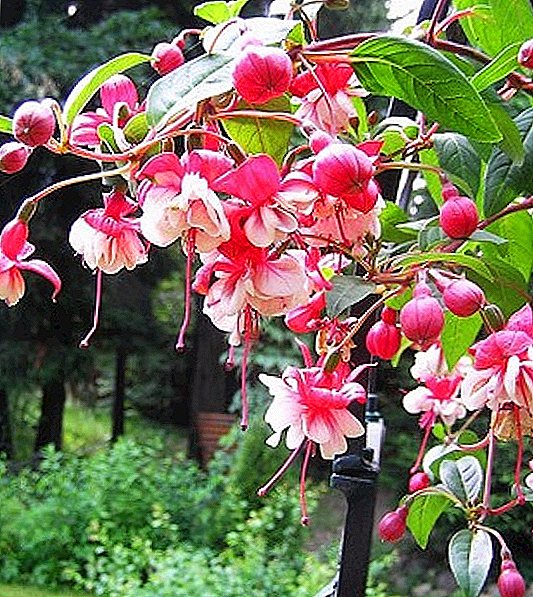 Fat sheep are far from beautiful. Not to mention the sheep, in which the ridiculous fat tail behind is often complemented by a ram on the front. A ram without its main decoration - horns - as it were, is no longer a ram, but something unintelligible. No wonder because a sheep herd of fat-tailed breed never chooses a leader from its sheep. However, the fact that a quarter of the world's sheep livestock falls on fat-tailed sheep indicates the value of this species of animals for humans. And, indeed, the fat-tailed sheep deserve quite a few kind words.
Fat sheep are far from beautiful. Not to mention the sheep, in which the ridiculous fat tail behind is often complemented by a ram on the front. A ram without its main decoration - horns - as it were, is no longer a ram, but something unintelligible. No wonder because a sheep herd of fat-tailed breed never chooses a leader from its sheep. However, the fact that a quarter of the world's sheep livestock falls on fat-tailed sheep indicates the value of this species of animals for humans. And, indeed, the fat-tailed sheep deserve quite a few kind words.
About breeding
Five thousand years ago, the ancient peoples of Mesopotamia imprinted on mosaics and dishes images of fat-tailed sheep, which cannot be confused with anyone else. And the whole history of the Central Asian countries was held in close symbiosis with these animals.  And scientists, meanwhile, are still unsuccessfully struggling to unravel the appearance of a fat tail in these sheep: did it happen at the feed of people or did mother nature take care of it.
And scientists, meanwhile, are still unsuccessfully struggling to unravel the appearance of a fat tail in these sheep: did it happen at the feed of people or did mother nature take care of it.
Although it seems that human involvement here is the same as in the distribution of humps among camels. These humps, performing the same functions as the sheep's tails, as researchers believe, emerged in both double-humped camels and single-humped animals as a result of the struggle for survival in harsh environmental conditions. The same thing probably happened with fat-tailed sheep, which, with a permanent shortage of pasture, were forced to make supplies in case of a possible starvation period.
Nutrients and vitamins that accumulate along with the fat in the fat tails, guaranteed animals with long transitions in search of food survival in its temporary absence.
Of course, having tamed these fat-tailed sheep, the man then made an enormous contribution to the selection of animals, deriving several of the most productive for various indicators and adapted to local conditions of the breeds. 
External signs
These animals primarily differ in the type and size of their fat tails, the weight of which, depending on the breed, varies from 7 to 30 kg.
In addition to this main external feature, animals of this breed have characteristic features reflected in:
- weight120 kg in rams and 80 kg in sheep;
- height at witherswhich, on average, is 80 cm for a sheep and 60 cm for a sheep;
- telestretched in length, with a strong constitution, with a broad chest, well-developed muscles and a prominent slightly forward chest;
- feetthat different breeds may be of different lengths;
- head small in size with a narrowish and somewhat hunchbacked muzzle, with drooping ears, and mainly komola;
- the tailhaving a length of about 9 cm;
- wool coarse and semi-coarse structure with usual dark brown, red, black colors and with less common gray and white, most often of uniform tonality.
Did you know? Unlike almost all other animals, sheep have not round, but a rectangular pupil. In this strange quality, only octopus can compete with them.
Varieties
Thanks to persistent breeding work, man managed to breed breeds of fat-tailed rams, which are most suitable for living in specific regions, while possessing pronounced specific qualities.
The following breeds of these animals are best known:
- edilbayevskie;
- Gissar
- jaidar

Edilbayevskie
It has been almost two hundred years since in the Kazakh steppes local fat-tailed sheep were crossed with Astrakhan coarse-haired sheep.
The result was easy-going nomadic breed of meat and greasy directionIt is able to survive quite confidently both in the conditions of a harsh winter and in the summer dry heat, and not requiring any careful care or a special menu.
Learn more about the pride of the steppes of Kazakhstan - edilbayevskoy breed of sheep.
The Edilbayevsky breed of fat-tailed sheep is a rather large animal with an average height of 80 cm at the withers and weighing up to 120 kg in rams and up to 75 kg in sheep.  They have strong legs, capable of covering long distances, a well-developed body, covered with red, black or brown wool, which is mainly used to make carpets. According to the wool, these animals are the most productive compared to other fat-tailed sheep. For example, one male can give up to 4 kg of wool.
They have strong legs, capable of covering long distances, a well-developed body, covered with red, black or brown wool, which is mainly used to make carpets. According to the wool, these animals are the most productive compared to other fat-tailed sheep. For example, one male can give up to 4 kg of wool.
As for meat, which brought glory to this breed and is considered a delicacy, its edible part represents half of the total weight of the animal.  Not having a high fertility, animals of this breed, however, differ in their ability to give up to 155 liters of quite fat milk during the lactation period, for which they are referred to the dairy breed of fat-tailed sheep.
Not having a high fertility, animals of this breed, however, differ in their ability to give up to 155 liters of quite fat milk during the lactation period, for which they are referred to the dairy breed of fat-tailed sheep.
Read also about dairy, meat and fine-wool sheep breeds.
Hissar
The Hissar breed originates from Tajikistan and is divided into three types:
- greasy;
- meat-greasy;
- meat.
This separation is also reflected in the appearance of the sheep of a given breed, that is, on the size, constitution, and location of the fat tail.
But, in any case, Gissar sheep in their dimensions are world champions among all sheep livestock. With an average weight of 150 kg, rams of this breed can reach 190 kg. About 150 kg are capable of gaining a good feed and sheep.  Another valuable quality of this breed is called exclusively stable immunity of their body, which allows them to practically not get sick.
Another valuable quality of this breed is called exclusively stable immunity of their body, which allows them to practically not get sick.
A hallmark of the Gissar sheep is a powerful fat tail, the stock of fat in which can reach 40 kg. Nature made sure that such a solid weight does not interfere with the animal while moving, raising it higher.
Slaughter meat yield in this breed is 60%. It has very high taste and nutritional qualities, and it is highly valued in the meat market, being considered expensive.
Hissar sheep during lactation are able to produce up to 100 liters of milk.  But the wool in this breed of high condition is not different. With a low cutting in the amount of about 1.5 kg per sheep, it is also coarse and goes mainly to the production of carpets, coarse cloth and felt.
But the wool in this breed of high condition is not different. With a low cutting in the amount of about 1.5 kg per sheep, it is also coarse and goes mainly to the production of carpets, coarse cloth and felt.
Did you know? Currently, all the multi-million sheep population on our planet has almost 600 different breeds.
Jaidar
This breed possesses meat-greasy orientation. It comes from Uzbekistan, where the local language is characterized in the local language.
Unlike its other brethren, the Jaidar sheep are short-legged, although they have a powerful elongated body with strong bones and a broad back, covered, as a rule, with black, but sometimes with brown, gray or red hair. It is sufficiently coarse, containing up to 60% of fluff, which is mainly used to make felt.  Fat at them happens both raised, and drooping.
Fat at them happens both raised, and drooping.
In terms of their productivity, the Jaidar sheep occupy an intermediate position between the Gissar and Edilbaev breeds.
Rams can produce up to 3.5 kg of wool, approaching the Edilbaev indicators, and reach almost 60% slaughter of meat, which is comparable to the productivity of animals of the Gissar breed.
It is interesting to read about other breeds of sheep: Texel, Kuibyshev, Romanov, Katum, merino (breed, breeding), dorper, Romney march.
Productivity
All fat-tailed sheep are able to supply man:
- fat;
- meat;
- wool;
- milk;
- skin
However, how much this demonstrates the productivity of an individual depends on the breed and on the conditions of the animals.
Fat
Fat accumulating in fat tails, also called fat tail fat, in a volume from 7 to 30 kg, and sometimes up to 40 kg, for each animal serves for it as a kind of pantry, in which minerals, vitamins, amino acids and other nutrients accumulate on a black day. .  This wealth is successfully used by people, especially in Central Asian cuisine, where the fat from the sheep's rump serves a variety of functions, including the properties of an excellent preservative.
This wealth is successfully used by people, especially in Central Asian cuisine, where the fat from the sheep's rump serves a variety of functions, including the properties of an excellent preservative.
Excellently proven this product in the confectionery industry, with success used in traditional medicinewhere it is effectively used to treat cough, joint pain, colds, and to strengthen the immune system of the human body.
Meat
The meat component of fat-tailed rams adds to its high taste and nutritional qualities dietary properties, deservedly belonging to the elite class of meat products.
Most of the carcass of this animal - up to 60% - gives clean meat at the exit. And at the same time it is especially valuable that the lambs of this breed very quickly gain weight and by 6 months are able to reach a weight that is half the weight of an adult animal.
The meat obtained from such lambs does not have time to grow old and contains all the beneficial substances formed as a result of the use of environmentally friendly feed by animals. 
Wool
The animals of this breed are distinguished by a rough and semi-rough six, which, however, is not only tough, but also very warm. Every sheep has an average of 3 kg of wool annually, and for inexplicable reasons, more white animal wool is produced than with black or red wool.
Wool of this breed is used in the manufacture of blankets, carpets, warm clothes, felt products.
We recommend that you familiarize yourself with the basic rules for sheep shearing and criteria for selecting a sheep shearing machine.
Milk
Lambs of this breed grow rapidly, not for a long time depending on mother's milk and almost immediately switching to grass, so that a man remains a lot of unclaimed milk from sheep mothers.
On average, this animal during lactation is able to produce about 100 liters of milk, which is used in its natural form, and also goes for the manufacture of butter, dairy products and delicious cheese. 
Breeding regions
This sheep breed is widely cultivated in the Kazakh steppes, in all of Central Asia, in some Caucasian regions, in North Africa, in the Ukrainian and Russian steppes.
Conditions of detention
These animals are very unpretentious and do not require much effort for their content.
Requirements for the room
Most of the year, animals spend on pastures and only in the winter they, depending on the breeding region, in one way or another require sheepfolds for protection from the weather. The room may also be required during lambing.  The main requirements for sheepdogs are the lack of drafts, dampness and cold floor. The temperature is recommended to maintain with a minimum of +9 ° C.
The main requirements for sheepdogs are the lack of drafts, dampness and cold floor. The temperature is recommended to maintain with a minimum of +9 ° C.
Learn how to build a sheep room for your own sheep house.
The compartments where the females are going to be kidding should be warmer, with an average temperature of +19 ° C.
Grazing in pastures
It is believed that the flock of fat-tailed sheep should include more than twenty heads. To feed such a number of animals, a suitable area of pasture is required.
Sheep can be grazed on any terrain. The exceptions are swamps and forests, which are contraindicated for them.
Sheep of this breed can stay in conditions of free grazing for up to 200 days. This period may vary depending on the region where the flock is inhabited.
As a rule, the flock is on the pasture around the clock. To protect against heavy rain, awnings can be constructed there. 
Feeding and water
In late autumn and winter, when access to pasture is stopped, animals are transferred to feed prepared by a person in advance.
Important! It is contraindicated to feed fat-tailed sheep with hay, which was mowed in a swamp or in the forest: it can cause poisoning in animals.
On average, one animal needs 2 kg of hay and 500 g of oats per day. Above this, the sheep are fed carrots, potatoes and beets. Usually they are fed three times a day.
It is not recommended to add wheat and corn grains to the sheep diet, which can lead to indigestion.
In order for an animal to fully develop and be healthy, its diet must include various types of high-quality feed.
Animals should have constant access to water, and salt briquettes should be placed near the trough, which animals love to lick very much, satisfying their body's need for minerals. 
How to endure cold and heat
Thick wool and a stock of subcutaneous fat allow the fat-tailed sheep to be transferred fairly easily to both extreme heat and frost. With a good forage base, these animals are able to live everywhere except in the regions of the Far North.
Important! Being pasture animals, sheep have a negative attitude to long-term staying indoors. Therefore, in winter, it is recommended that sheep of any breed be allowed to spend the whole daylight day in the open air.
Case and breeding of young animals
Although mating can occur all year round, it is customary to pair these animals in the late fall. Artificial insemination is also timed to this period.
In order to maintain the gene pool of flocks at the achieved level, shepherds usually keep a couple of main males and a couple of spare ones.
Puberty
Females become sexually mature at 5-8 months. 
How long is the pregnancy?
Sheep are carrying lambs for 145 days.
Learn more about caring for a pregnant sheep.
How many lambs are born
As a rule, during one lambing, which lasts quite quickly - on average, half an hour - a sheep produces one or two lambs. Much less often they are from three to five.
Care for the young
Immediately after the birth of the lamb, the nostrils and the mouth are cleaned of mucus and, if required, free it from the amniotic bubble.
After that, the newborn is placed with the mother's nipples. If a sheep has several lambs at once, in order to avoid a shortage of milk, the lamb is placed on a sheep with only one cub.  After a couple of days, the lamb is already able to switch to pasture.
After a couple of days, the lamb is already able to switch to pasture.
We advise you to read about caring for lambs after lambing, lambs without a mother.
Advantages and disadvantages
The importance of fat-tailed sheep for humans is evidenced by the fact that a third of the total world livestock of sheep falls on this breed.
In particular, these animals are valued for:
- the ability to graze in a sharply continental climate at high and low temperatures;
- unpretentiousness in the diet, which even with a poor pasture allows the sheep to maintain good condition;
- greater fattening rate;
- endurance, allowing to overcome distances up to 500 km;
- early maturity;
- high taste of meat, milk and fat;
- stability while preserving the gene pool, confident inheritance of the best qualities;
- peaceful, friendly nature.
 These sheep have some properties that can be attributed to their disadvantagesexpressed in:
These sheep have some properties that can be attributed to their disadvantagesexpressed in:
- hypersensitivity to dampness and drafts;
- low fertility at the level of one or two lambs;
- Inhomogeneity of hair cut levels in spring and autumn.
Video: The Experience of Breeding Fat Sheep
Fat-tailed sheep: reviews
Chamomile
The mutton received from fat-tailed sheep is a first-class market commodity, and it can quite satisfy the most strict and refined taste requirements. Therefore, the high quality of meat of fat-tailed sheep and their large weight can be of great importance in the organization of large enterprises for the production of elite mutton. Females do not usually cut, they go for reproduction. For the meat go sheep. Females are cut only after 3-4 years of detention. The wool of fat-tailed sheep is shorn only once a year - somewhere in May - early June. The process of cutting is quite simple.


Those minor flaws that are noted in fat-tailed sheep are more than overlapped by their remarkable qualities, which allow them to live with a person for thousands of years, warm him with their wool, feed them with meat, drink milk, while pleasing their friendly and agreeable character.


